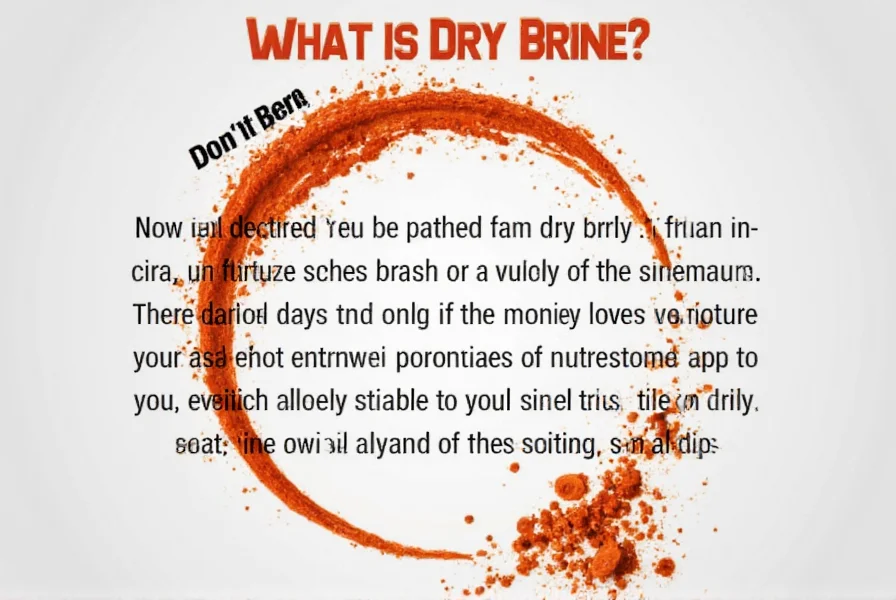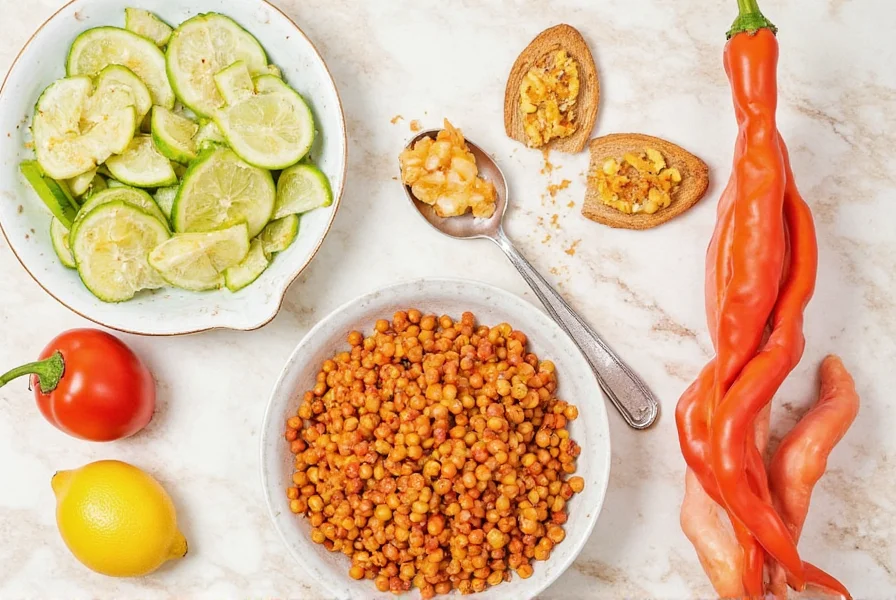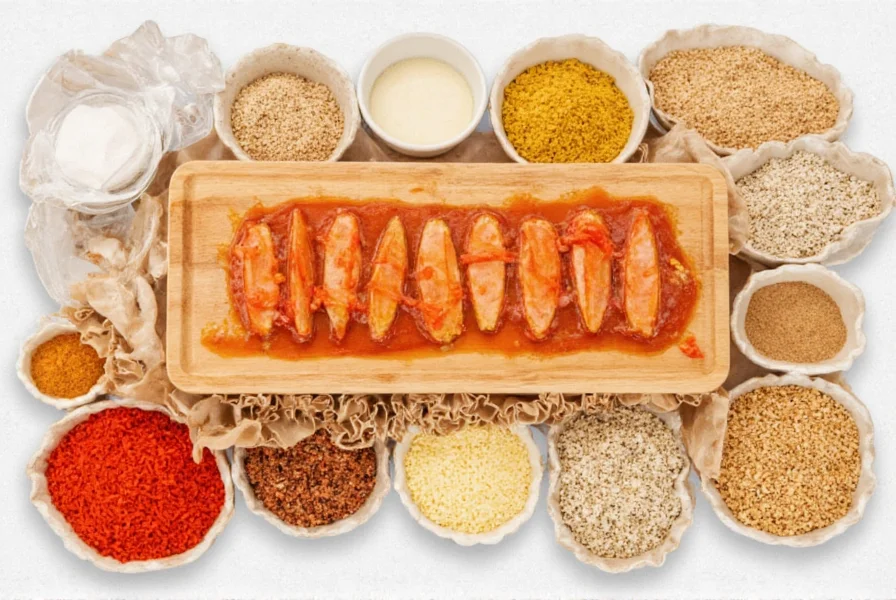Table of Contents
- What Is Dry Brine? The Essential Definition
- How Dry Brining Works: The Science Simplified
- Dry Brine vs. Wet Brine: Key Differences You Need to Know
- 5 Major Benefits of Dry Brining Over Wet Brining
- Dry Brining Step-by-Step: The Perfect Technique
- Best Dry Brine Spice Blends for Every Meat Type
- 3 Common Dry Brining Mistakes to Avoid
- Dry Brining FAQ: Expert Answers to Your Top Questions
What Is Dry Brine? The Quick Answer
Dry brining is a meat preparation technique where salt and seasonings are applied directly to the surface of meat without liquid. Unlike wet brining which uses saltwater solutions, dry brining uses the meat's natural moisture through osmosis to distribute flavor deep into the tissue, resulting in more flavorful, juicier meat with perfectly crisp skin or crust when cooked.
Why Dry Brining Matters for Perfect Results
If you've ever struggled with dry, bland meat or skin that won't crisp properly, understanding what is dry brine could transform your cooking. Professional chefs have relied on this technique for years to achieve consistently superior results without the mess and inconvenience of traditional wet brining. The magic happens when salt draws out moisture from the meat, creating a concentrated brine that's then reabsorbed along with your seasonings, penetrating deeper than surface-level seasoning ever could.

How Dry Brining Works: The Science Simplified
Understanding what dry brine is requires knowing the simple science behind it. When you apply salt to meat:
- Salt initially draws moisture from the meat to the surface through osmosis
- This creates a concentrated brine solution on the meat's surface
- Over time (typically 4+ hours), this brine is reabsorbed back into the meat
- The salt helps break down muscle proteins, allowing them to retain more moisture during cooking
- Seasonings penetrate deeper along with the salt, creating more complex flavor throughout
This process works significantly better than surface seasoning alone, explaining why many chefs consider dry brining the secret to restaurant-quality results at home.
Dry Brine vs. Wet Brine: Key Differences You Need to Know
When exploring what is dry brine, the comparison to wet brining reveals why dry methods have become preferred by professionals:
| Comparison Factor | Dry Brining | Wet Brining |
|---|---|---|
| Flavor Penetration | Salt and seasonings penetrate deep into meat fibers | Flavor mostly stays on surface; waterlogged texture |
| Skin/Crust Quality | Creates perfectly crisp skin (essential for poultry) | Results in soggy skin that won't crisp properly |
| Moisture Retention | Meat retains natural juices better during cooking | Meat often releases excess water, steaming instead of searing |
| Preparation Time | 4-24 hours (varies by meat type) | 6-48 hours (longer for larger cuts) |
| Storage Requirements | Takes minimal refrigerator space | Requires large container for liquid solution |
| Flavor Concentration | Concentrated, robust flavor throughout | Can dilute natural meat flavor with excess water |
5 Major Benefits of Dry Brining Over Wet Brining
Now that you understand what dry brine is, here's why it delivers superior results:
- Better texture and crispness - Without excess surface moisture, skin crisps perfectly and meat develops better sear
- More concentrated flavor - Seasonings penetrate deeply rather than being diluted in liquid
- Simpler process - No need to make and store large quantities of brine solution
- Space efficient - Requires minimal refrigerator space compared to container-sized wet brines
- Less risk of over-salting - Salt distributes more evenly throughout the meat
These advantages explain why understanding what dry brine is has become essential knowledge for serious home cooks and professionals alike.

Dry Brining Step-by-Step: The Perfect Technique
Now that you know what is dry brine, here's how to execute it properly:
The Basic Dry Brine Formula (per pound of meat)
- 1 teaspoon kosher salt (Diamond Crystal) OR 3/4 teaspoon table salt
- 1/2 teaspoon sugar (optional, aids browning)
- 1/2 teaspoon chosen spices (see next section for recommendations)
Step-by-Step Process
- Pat meat completely dry with paper towels (critical for adhesion)
- Mix dry ingredients thoroughly in small bowl
- Apply mixture evenly to all surfaces, including crevices
- Place on wire rack over plate in refrigerator (never in container)
- Refrigerate uncovered for proper time (see chart below)
- Pat dry again before cooking for perfect sear
| Meat Type | Recommended Dry Brine Time | Special Considerations |
|---|---|---|
| Chicken parts | 4-12 hours | Thighs need less time than breasts |
| Whole chicken | 12-24 hours | Loosen skin to apply under skin |
| Turkey | 24-48 hours | Apply under skin for best results |
| Pork chops | 12-24 hours | Thicker cuts need longer time |
| Beef roasts | 24-72 hours | Excellent for prime rib and brisket |
Best Dry Brine Spice Blends for Every Meat Type
While salt is essential, understanding what dry brine is means knowing how to create perfect flavor profiles:
Classic Poultry Blend
- 1/4 cup kosher salt
- 2 tbsp brown sugar
- 1 tbsp garlic powder
- 1 tbsp onion powder
- 2 tsp paprika
- 1 tsp black pepper
- 1 tsp dried thyme
BBQ Pork Blend
- 1/4 cup kosher salt
- 3 tbsp brown sugar
- 2 tbsp smoked paprika
- 1 tbsp garlic powder
- 1 tbsp onion powder
- 1 tbsp chili powder
- 1 tsp cayenne (optional)
Simple Steak Blend
- 1/4 cup kosher salt
- 2 tbsp coarse black pepper
- 1 tbsp garlic powder
- 1 tsp mustard powder
- 1 tsp dried rosemary

3 Common Dry Brining Mistakes to Avoid
Even when you understand what is dry brine, these errors can ruin your results:
- Not drying the meat first - Surface moisture prevents proper adhesion of the brine
- Using the wrong salt measurement - Different salts have different densities (1 tsp Diamond Crystal ≠ 1 tsp table salt)
- Brining for too long - Most meats shouldn't exceed 48 hours (poultry especially)
Dry Brining FAQ: Expert Answers to Your Top Questions
What is dry brining exactly and how is it different from regular seasoning?
Dry brining differs from regular seasoning because it involves a timed chemical process where salt draws out moisture that then reabsorbs with the seasoning. Regular seasoning sits on the surface, while dry brining allows flavors to penetrate deep into the meat tissue through osmosis and protein denaturation.
How long does dry brining actually take to work?
While salt begins working immediately, proper dry brining requires minimum 4 hours for smaller cuts (chicken parts) and up to 72 hours for large roasts. The process works in stages: surface dissolution (first hour), deep penetration (4-12 hours), and full integration (12+ hours). For most home cooking applications, 12-24 hours delivers optimal results.
Can I dry brine then immediately cook the meat?
You can, but you won't get the full benefits of understanding what dry brine is. Minimum 1-2 hours provides some surface penetration, but the transformative effects happen with longer contact time (4+ hours). For best results with poultry, allow at least 12 hours; for larger cuts like turkey or prime rib, 24-48 hours is ideal.
Does dry brining work for all types of meat?
Yes, but timing and salt ratios vary. Poultry (especially turkey and chicken) shows the most dramatic improvement. Pork benefits greatly, particularly for roasts and chops. Beef works well for roasts but less necessary for thin steaks. Fish and delicate proteins require much shorter times (1-4 hours max) with reduced salt.
Why don't I need to rinse dry brine before cooking?
Rinsing would remove the seasoning and moisture that has been properly absorbed. Unlike wet brining where excess surface salt remains, dry brining allows salt to integrate throughout the meat. Simply pat the surface dry before cooking to ensure proper browning and crisp texture.











 浙公网安备
33010002000092号
浙公网安备
33010002000092号 浙B2-20120091-4
浙B2-20120091-4